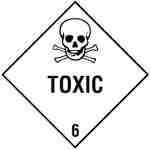
Overcome the health and regulatory concerns of lead with injection moldable Ecomass high gravity compounds, the innovative leader in lead substitute materials.
Lead is an extremely useful commodity
Lead ranks fifth in tonnage consumed worldwide following iron, copper, aluminum, and zinc. Lead has outstanding physical properties:
- Low melting point
- Ease of casting
- High density
- Malleability
- Low strength
- Ease of fabrication
The principal uses of lead in descending order are:
- Storage batteries
- Pigments
- Ammunition
- Solders
- Plumbing
- Cable coverings
- Bearings
- Caulking
In addition, lead is used to attenuate sound waves, radiation, and mechanical vibration.
Regulatory and Legal Considerations
The earliest lead artifacts date from about 6500 BC and lead’s toxic effects have been known or suspected for almost as long. However, with no realistic alternatives, lead’s unique chemical and physical properties coupled with its inexpensive availability, combined to prevent any meaningful regulation of its use until fairly recently. Banning lead as an additive to gasoline and paint, as well as the recycling of automobile batteries, has increased concern about lead as a significant public health problem. Evidence regarding adverse health effects at successively lower levels of lead exposure has led to downward revision of criteria for acceptable blood-lead concentrations.
Lead is toxic
Lead is a cumulative poison that can be ingested, inhaled, or absorbed through the skin. Lead is toxic to the central nervous system, kidneys, cardiovascular system, and developing red blood cells at very low blood levels beginning at 10 mg/dL. It is especially toxic to developing fetuses and children. It causes delayed development, diminished intelligence, and altered behavior. Severe toxicity can cause sterility and abortion, as well as neonatal mortality and morbidity. Growing scientific evidence and public awareness of lead’s toxicity has provoked increasingly stringent regulation and prohibition of the use of lead.
Current Regulatory Status
Lead is ranked number one on the U.S. EPA’s Top 20 Hazardous Substances Priority List. EPA has listed lead (EPA Toxic Chemical List CAS No. 7439-92-1) as a toxic chemical and set very restrictive threshold limits for concentrations in air, soil, water, and vegetation. EPA has now designated 10 mg/dL as a maximum target blood level for regulatory development and enforcement/clean-up purposes. Disposal of lead-contaminated soil or waste that contains lead (both now classified as a hazardous-waste in concentrations at or above the EPA limit of 5mg/L) is extremely expensive. In accordance with the U.S. Resource Conservation and Recovery Act (RCRA) land disposal restrictions, lead-contaminated soil must be placed in a hazardous waste landfill.
EPA Lead Standard limits lead in drinking water to 0.015 mg/L and currently requires 79,000 public water suppliers to monitor lead levels at household taps. It has set a Maximum Contaminant Level Goal of 0.00 mg/L for drinking water. The 1988 Lead Contamination Control Act mandated the removal of water coolers containing lead liners or lead solder. The Consumer Products Safety Commission limits lead in paints to 0.06%. EPA limits lead in unleaded gasoline to 0.05 g/gal, thereby limiting exposure to airborne lead where the limit is currently set at 1.5 microg/cc of air over 3 months for the public. OSHA establishes maximum exposure levels for lead in the workplace.
Ecomass Compounds can replace lead in many applications
Lead is still one of the most common, but least seen, metals in use today. Manufacturers and consumers alike are interested in nontoxic alternatives to lead because of its:
- Toxicity to humans and wildlife
- Environmental concerns for disposal
- Future contamination of the soil and water
- Tremendously expensive remediation costs mandated by federal agencies.
Ecomass Compounds do not have the chemical properties of lead and therefore are not a viable alternative in applications such as batteries, pigments, solders, etc. However, our high gravity compounds do have the density of lead and can be formulated to achieve the same physical properties of lead without the negative toxic implications. Additionally, our high gravity compounds have attributes – such as injection and compression moldability and high yield strength – not associated with lead that give our customers additional design freedom. Our eco-friendly materials are a viable lead replacement in many applications. Give us a call today to see how we can formulate the perfect high density engineered thermoplastic for your application needs.
